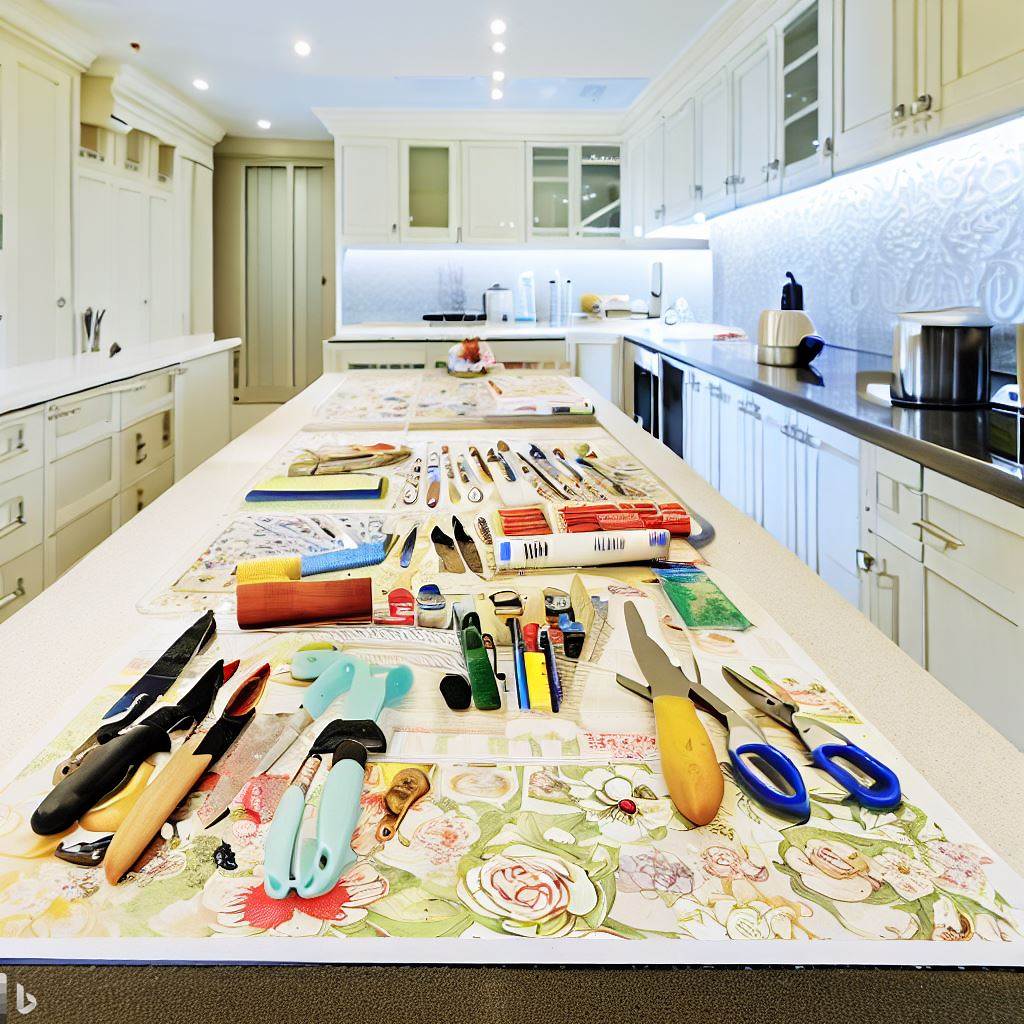Decoupage for Beginners: Starter Kit Essentials and First Project Tips
The art of decoupage may appear intricate, but with a few basic supplies and easy techniques, beginners can quickly start creating gorgeous decoupaged crafts. By equipping your workspace with essential decoupage mediums, brushes, papers, sealants, and tools, you can begin experimenting with your first decorative pieces. Approach designs simply at first as you hone skills. Let these starter kit supply recommendations, fundamental methods overview, initial project ideas, and beginner troubleshooting tips lay the foundations for mastering decoupage creativity down the road.
Building Your Beginner Decoupage Toolkit
These affordable supplies form a solid starter set.
Decoupage Medium
Choose versatile all-in-one adhesives and sealants like Mod Podge or decoupage glue.
Assorted Brushes
Include a range of brush sizes and shapes like flats, rounds, filberts, and liners.
Papers and Images
Collect magazines, tissue papers, gift wrap scraps, napkins, or laser printouts.
Craft Knife and Cutting Mat
Opt for an X-Acto knife with sharp replacement blades and a self-healing mat.
Scissors
Invest in a designated pair of sharp paper scissors for precision cutting.
Ruler
Have both rigid and flexible rulers available to aid measurement.
Sealable Containers
Store papers tidily to protect from dust in sealed bins, boxes, or jars.
Surface Protectors
Use disposable tablecloths or plastic sheet covers to shield workspaces from drips.
Helpful Optional Decoupage Additions
Consider these embellishing supplies to elevate beginner projects:
- Assorted paint brushes for edging
- Embossing tools and powders
- Glues for dimensional objects
- Clamps and weights for drying items
- Decorative tapes, cords, and edging
- Colored pencils, crayons, or chalks
- Scrapbooking die cut machines for quick cuts
Overview of Key Decoupage Techniques
Get familiar with these basic methods for starter projects.
Prepping Surfaces
- Clean and abrade surfaces so decoupage adheres smoothly
Cutting Out Designs
- Use sharp scissors or craft knives on cutting mats for precision
Applying Decoupage Medium
Arranging Papers
- Build up visually pleasing compositions through layering
Allowing Papers to Dry
- Smooth papers flat as adhesives dry to avoid wrinkles
Sealing Completed Pieces
- Brush on clear topcoat sealers carefully to protect and unify
Simple First Decoupage Projects
Build confidence with these beginner-friendly ideas.
Napkin Boxes or Tins
Adhere colorful napkin cutouts onto small plain boxes and tins.
Decorated Wooden Ornaments
Collage tissue paper scraps in patterns onto round wood cutouts.
Embellished Flower Pots
Give plain terra cotta pots new life with decoupaged floral tissue papers.
Memo Boards
Cut and decoupage inspiring images onto blank bulletin boards.
Upcycled Trays
Transform thrift store trays with cut out magazine pictures layered on top.
Personalized Mugs
Create one-of-a-kind mugs featuring your favorite colors and motifs.
Troubleshooting Common Decoupage Beginner Issues
Pinpoint and correct these common early hurdles through practice.
Wrinkling
Use more adhesive, smooth gently, and weight papers until fully dry.
Blotchiness
Apply sealer in multiple thin coats, allowing drying between to prevent uneven absorption.
Bubbling
Brush adhesive out thoroughly underneath papers and smooth from center outward to remove air pockets.
Liftin
Ensure surfaces are clean. Rough them up slightly with sandpaper for better adhesion.
Stickiness
Avoid oversaturation. Seal fully with clear topcoats to prevent ongoing tackiness.
Brush Strokes
Dilute decoupage medium slightly with water and use soft wide brushes to minimize visible brushstrokes.
The joy of decoupage comes from jumping in creatively. With a few key supplies and patience as you build skills through trial and error, you’ll be embellishing and restoring items beautifully.
